Free Online Continuing Education Courses for Emts
Free Medical CEs
-

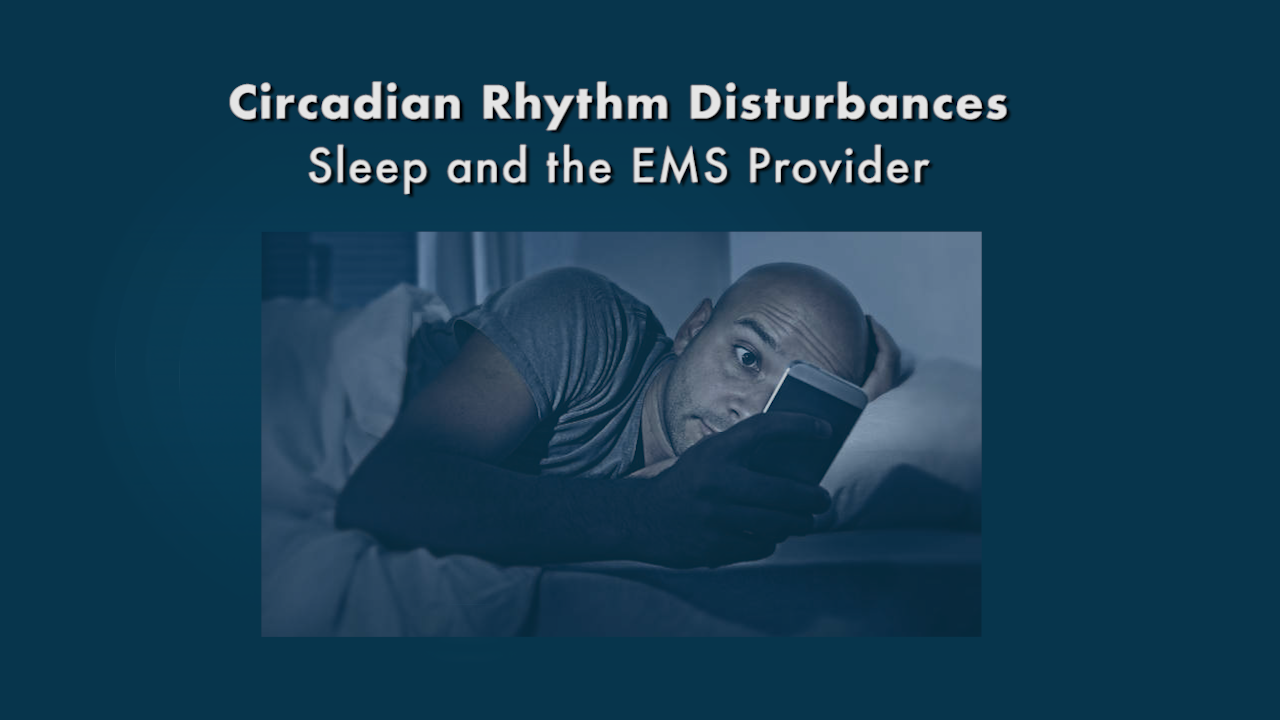
Circadian Rhythm Disturbances
- Lecture Credits: 0.5
- Designed for: MFR, EMT, Paramedic
- Category: Preparatory
-
Emergency response professionals are expected to be alert and awake at a moments notice at all hours of the day or night. This is a reasonable expectation, but what does it cost the care provider to meet this expectation? What are the consequences of sleep disruptions associated with our profession and how do we combat them? During this CME we will explore the circadian rhythm, the stages of sleep, and some of the consequences associated with sleep disruptions.
More Info
-


Intraosseous Cannulation
- Lecture Credits: 0.5
- Designed for: Specialist, Paramedic
- Category: Preparatory
-
Your patient is deteriorating quickly and you can't get an IV line!What do you do? Transport without vascular access and hope for the best? NO! You need vascular access and IO access can help! This CME lecture focuses on the intraosseous space as a non-collapsible vein while highlighting the advancement of IO tools and insertion techniques.
More Info
-

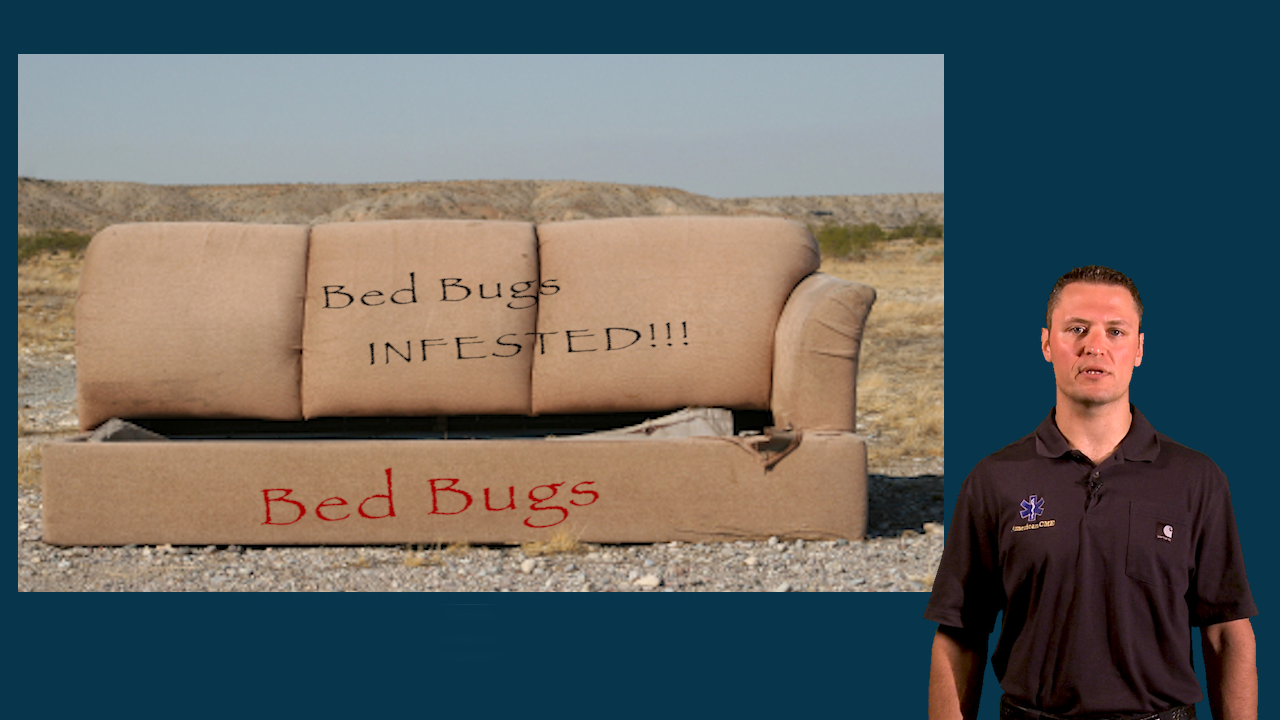
Bed Bugs
- Lecture Credits: 0.5
- Designed for: MFR, EMT, Paramedic
- Category: Preparatory
-
Did you know that bed bugs actually exist?!?! In fact, they are more real than you could ever imagine and they are showing up in our stations! This course will teach you to identify bed bugs, recognize the signs of their infestation and learn the proactive actions to take in order to reduce or eliminate the chances of transporting them back to your stations or even worse...your home!
More Info
-

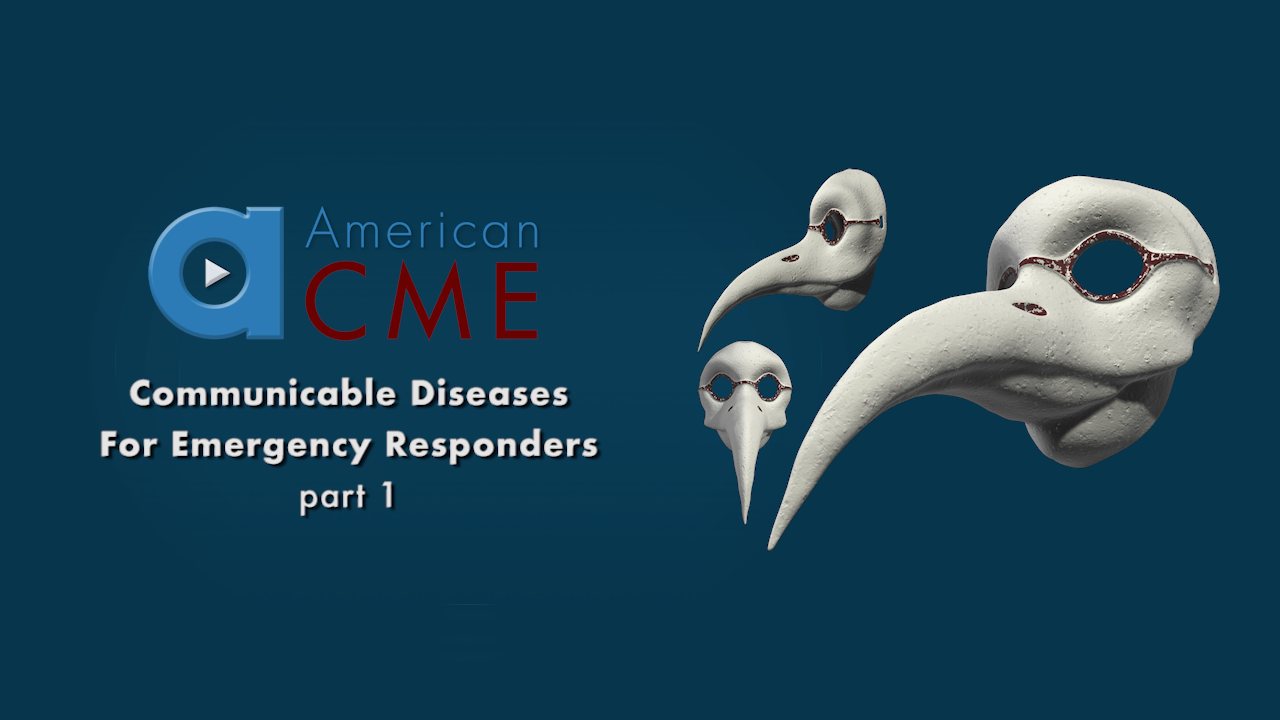
Communicable Diseases for Emergency Responders - Part 1
- Lecture Credits: 0.5
- Designed for: MFR, EMT, Paramedic
- Category: Preparatory
-
This course is designed to raise awareness regarding transmissible diseases. We cannot perceive these disease causing microorganisms directly, but we can recognize their presence and identity based upon our patients signs and symptoms. It is critical that as emergency medical professionals we understand these diseases in order to eliminate our own fears, and ultimately render effective care to our patients.
More Info
-

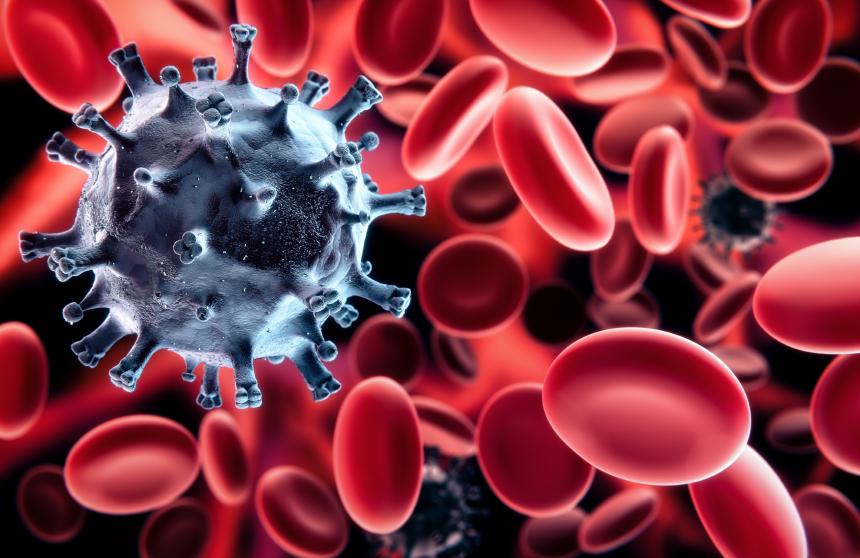
Communicable Diseases for Emergency Responders - Part 2
- Lecture Credits: 0.5
- Designed for: MFR, EMT, Paramedic
- Category: Preparatory
-
When addressing communicable diseases, understanding how they are transmitted and how they can be prevented is of vital importance. Proper precautions allows healthcare providers to be in direct contact with, and medically treat infectious patients while minimizing their exposure to infectious agents. This course outlines the protective measures that are available for your consideration.
More Info
-

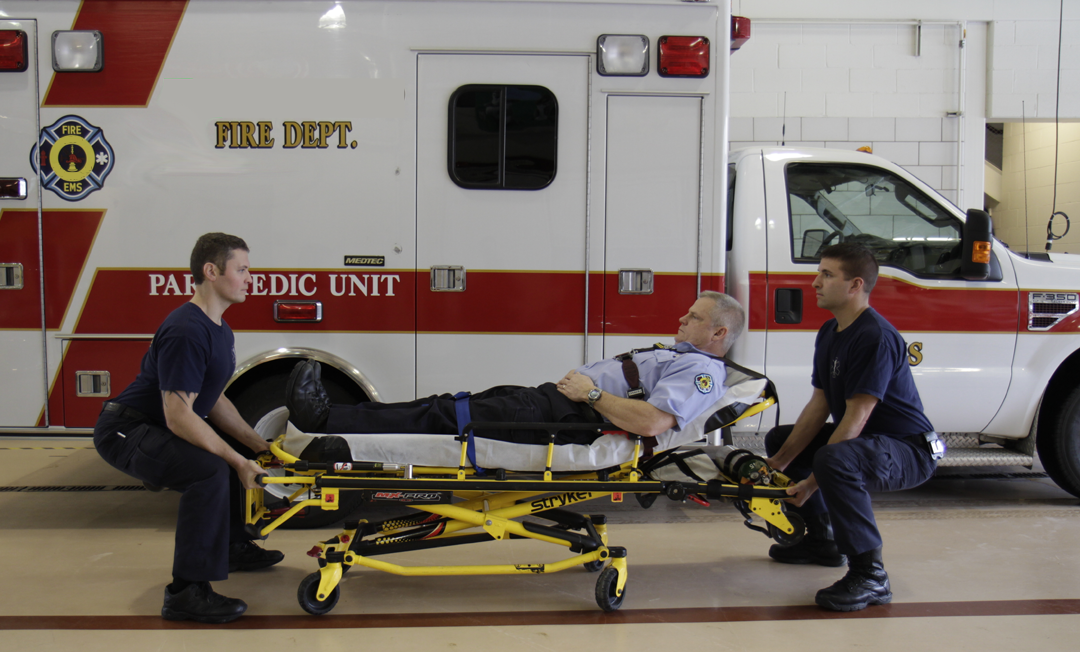
The Pains of Patient Lifting and Handling
- Lecture Credits: 0.5
- Designed for: MFR, EMT, Paramedic
- Category: Preparatory
-
EMS personnel are up to 8 times more likely to experience an on-the-job injury than private sector workers. Most common of all are back injuries. The nature of our work predisposes us to the possibility of an accident at any point in our shift. The reality of aging, and the aches and pains that come with it, are familiar to most of us. Yet, most of these aches and pains can be attributed to preventable injuries. This lesson is designed to re-familiarize us with injury prevention and proper lifting practices and an introduction to new tools and technology that are designed to ease the heavy burden imposed by the patients we work with.
More Info
-


Diabetes - Anatomy and Physiology
- Lecture Credits: 0.5
- Designed for: MFR, EMT, Paramedic
- Category: Preparatory
-
Over 25 million people in the United States deal with the condition on a daily basis. They monitor blood glucose levels, follow strict medication regimens, and make adjustments in their diet and lifestyles. The rapid spread of diabetes has brought to light much discussion of the personal woes of those afflicted. This lesson was designed to help you better understand how diabetes impacts the body.
More Info
-


A Roadmap to Physical Patient Restraint
- Lecture Credits: 0.5
- Designed for: MFR, EMT, Paramedic
- Category: Preparatory
-
The current roadmap to physical patient restraint is at best unclear. Our job as emergency service professionals requires us to deal with complex problems. These problems can be compounded when a patient or injured subject resists or refuses care due to the neurological impact of their medical problem or injury. Our initial education touches on the subject, but offers little in the way of practical skills. When describing a physical restraint procedure our protocols and training will typically tell us where to begin and where to end, but offer little insight into helping us understand how to get there. This course offers a basic, skill-focused description of how to effectively restrain a combative patient, which incorporates multiple situational variables.
More Info
-


Cot Operations: Patient Lifting and Handling Tools
- Lecture Credits: 0.5
- Designed for: MFR, EMT, Paramedic
- Category: Preparatory
-
This course is designed to increase EMS personnel and patient safety when lifting and loading patients during cot operations. This course describes the biomechanics related to patient loading and unloading, and the specific risk factors that increase the EMS provider's likelihood of back injury. Studies have shown powered cots and loading systems reduce the incidents of back injury due to both acute and cumulative trauma. This course will discuss the proper use of the Stryker Power Pro XT cot and the Stryker Power-LOAD cot fastening system, and how they greatly reduce the potential for injury to EMS providers and increase patient safety.
More Info
-

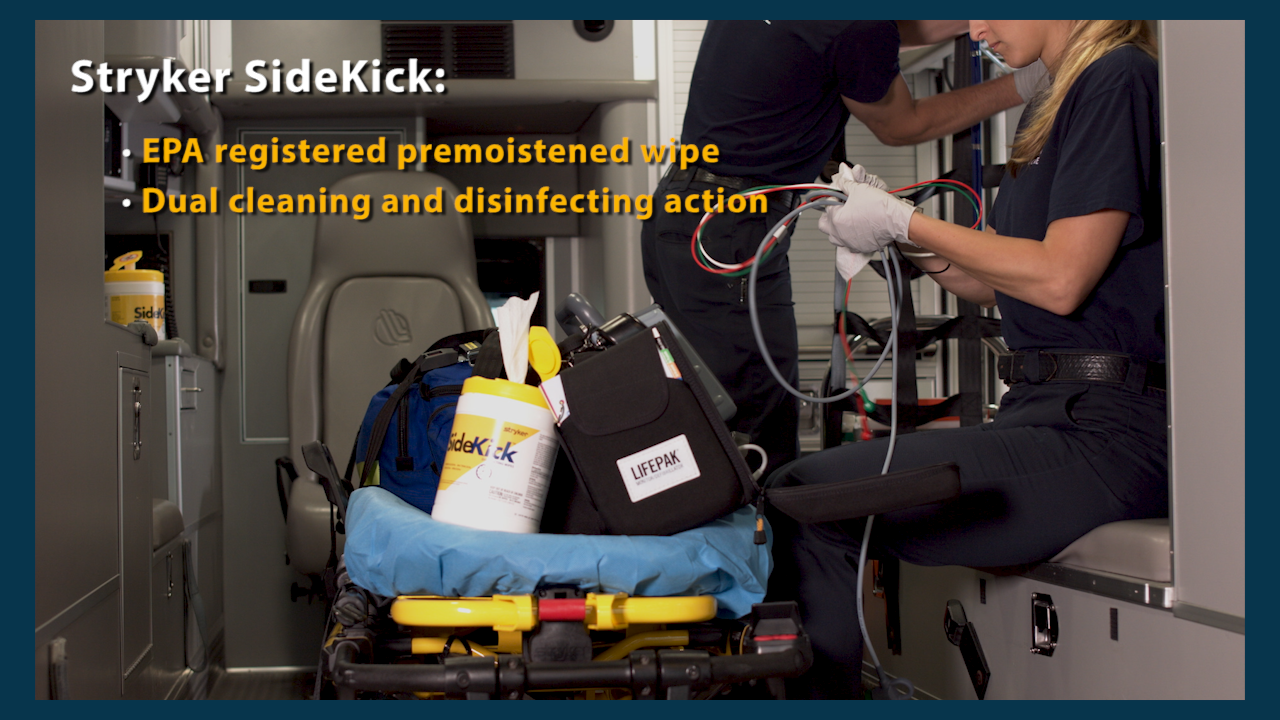
Keep it Clean.
- Lecture Credits: 0.5
- Designed for: MFR, EMT, Paramedic
- Category: Preparatory
-
How often do you disinfect your equipment? Did you know that some disease-causing microorganisms can live on dry surfaces for days, weeks or months depending on the circumstances? This CME lecture focuses on the importance of cleaning and decontaminating EMS equipment and our work environment to keep us healthy and safe.
More Info
-

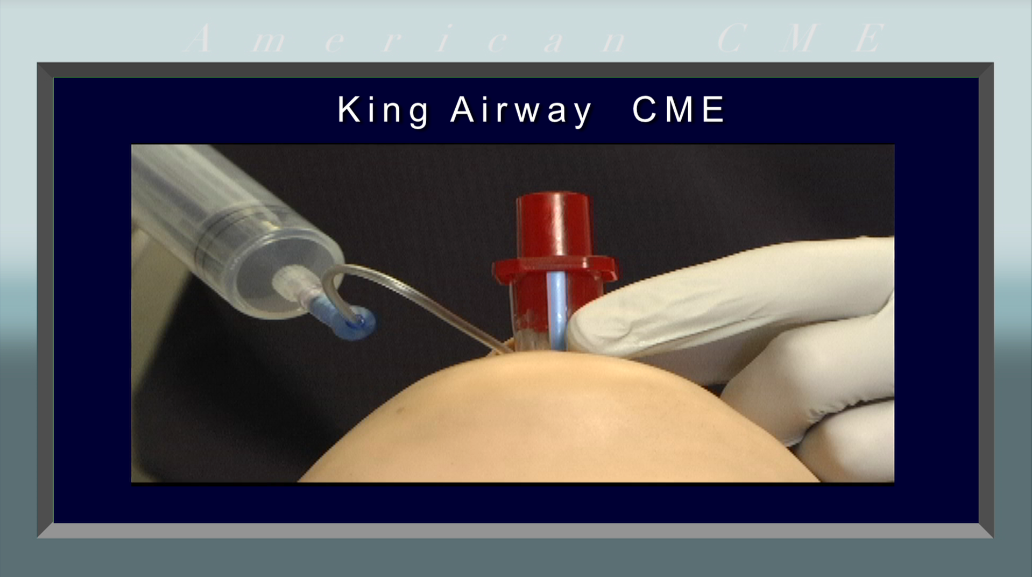
King Airway
- Lecture Credits: 0.5
- Designed for: EMT, Specialist, Paramedic
- Category: Airway Management / Ventilation
-
During this CME lecture you will be introduced to the King Airway© a relatively new airway device that has found its way into the hands of EMS personnel. This course will cover the indications, contraindications and how it supports respiratory functions as well as tips for successful insertion.
More Info
-


Patient Assessment Part 1- Scene Survey
- Lecture Credits: 0.5
- Designed for: MFR, EMT, Paramedic
- Category: Patient Assessment
-
Gloves on and the scene is safe? It's not quite that simple. This CME lecture focuses on the first phase of a Patient Assessment, Scene Survey and the elements and crucial components of a highly effective Scene Survey.
More Info
-


Patient Assessment Part 2- Initial Assessment
- Lecture Credits: 0.5
- Designed for: MFR, EMT, Paramedic
- Category: Patient Assessment
-
Stay and play? Or load and go? Your Initial Assessment will guide you to the best decision for your patient. This CME lecture focuses on the Initial Assessment phase of a complete Patient Assessment while identifying initial actions, critical and non-critical, that EMS personnel must take to keep their patient safe.
More Info
-


Patient Assessment Part 3- Secondary Assessment
- Lecture Credits: 0.5
- Designed for: MFR, EMT, Paramedic
- Category: Patient Assessment
-
Focused, Rapid or Detailed exam? Which type of physical assessment does your patient require? During this CME lecture we will focus on the Secondary Assessment phase of a complete Patient Assessment.
More Info
-

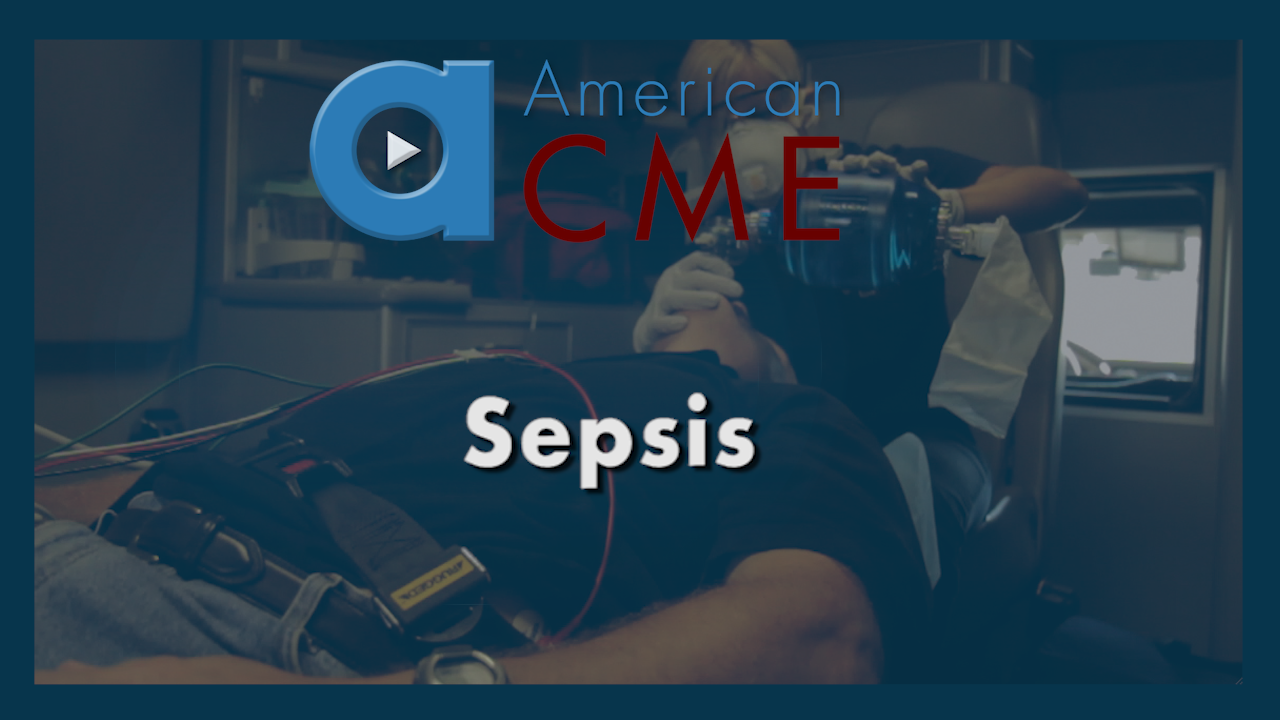
Sepsis – Recognize and Respond
- Lecture Credits: 0.5
- Designed for: MFR, EMT, Paramedic
- Category: Medical
-
Sepsis is simply a systemic inflammatory response caused by an infection. Patients diagnosed as "septic" number in the hundreds of thousands annually. It is essential that pre hospital emergency medical professionals have a working knowledge of exactly what sepsis is and how to treat it aggressively, if necessary.
More Info
-

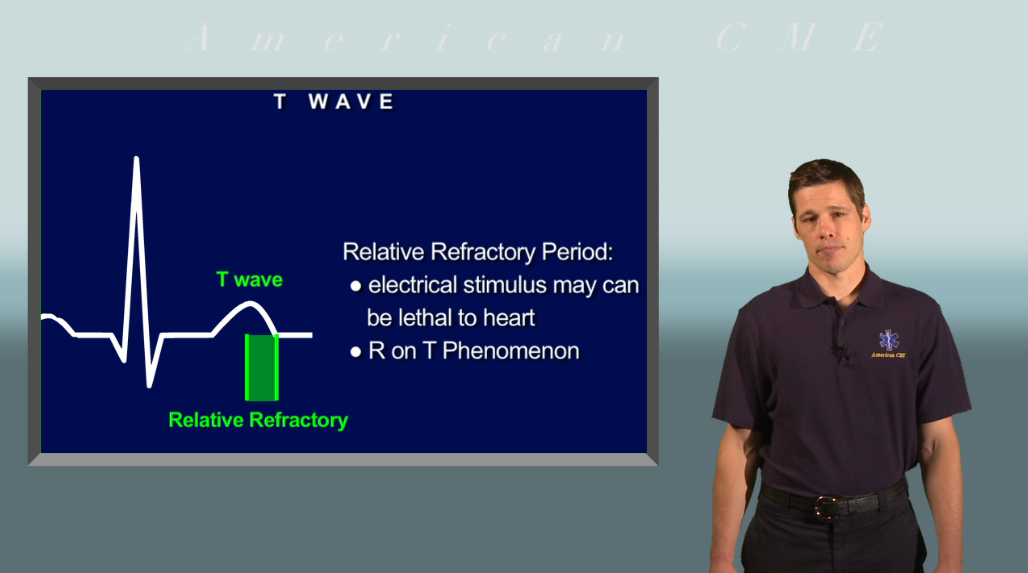
Basic EKG Fundamentals
- Lecture Credits: 0.5
- Designed for: Paramedic
- Category: Medical
-
This CME lecture focuses on the fundamentals of rhythm interpretation by describing how an EKG illustrates cardiac function.
More Info
-


12 Lead ECG review
- Lecture Credits: 0.5
- Designed for: Paramedic
- Category: Medical
-
Reading an EKG rhythm is one thing but do you know what all the numbers at the top of an EKG strip really mean? You can get a lot of info about your patient's condition from these numbers and values. This CME lecture focuses on interpretation of those numbers and values and how they relate to patient ailment.
More Info
-

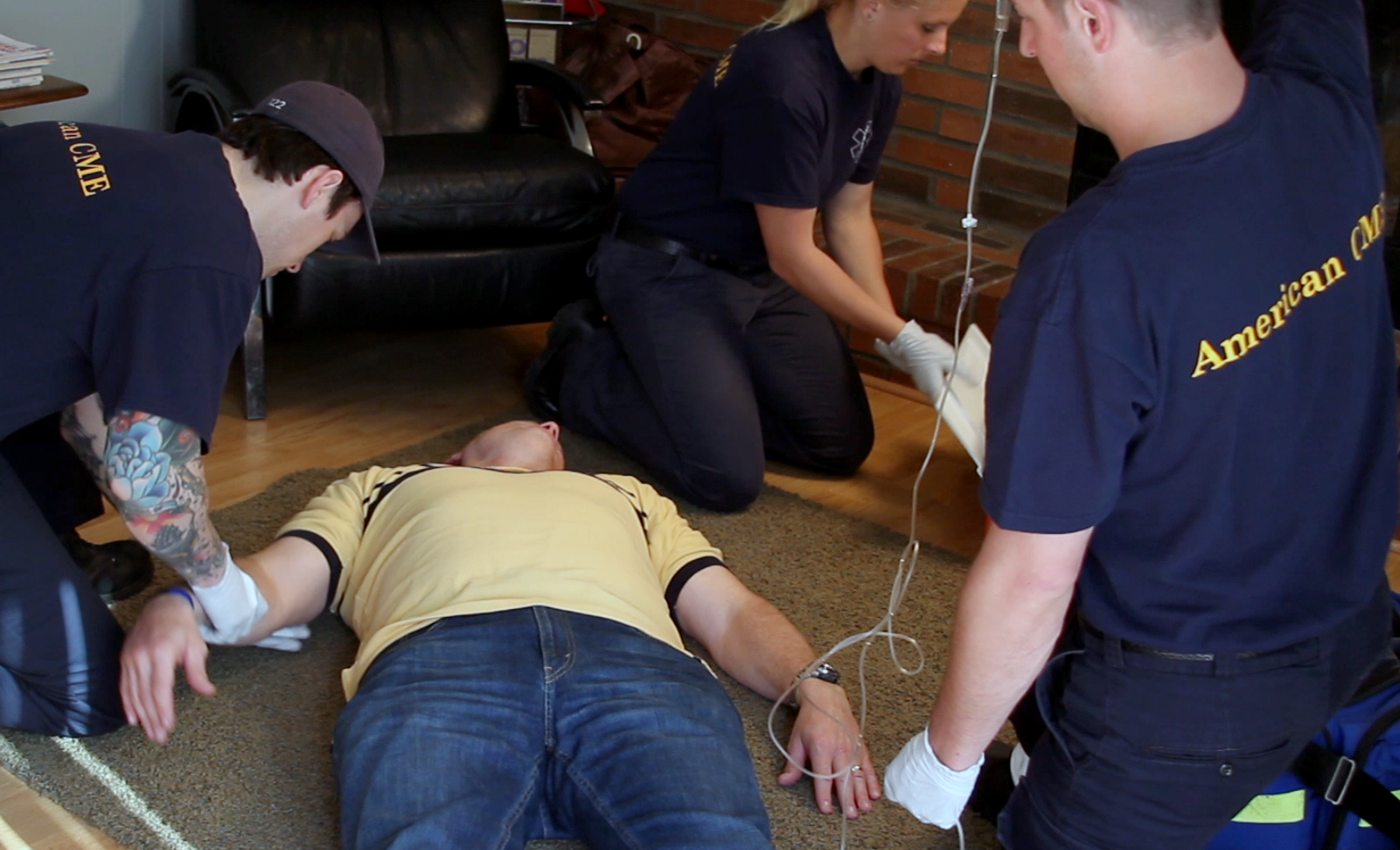
Diabetic Emergencies - Treatments and Interventions
- Lecture Credits: 0.5
- Designed for: MFR, EMT, Paramedic
- Category: Medical
-
When it comes to diabetic patients, management of their condition is a matter of balance. When balanced and managed effectively, diabetes can be relegated to a minor inconvenience. When the balance is upset, however, the patient's condition can quickly escalate to an emergency. In this lesson, we will discuss those diabetic emergencies and the appropriate interventions and treatments.
More Info
-


The ResQCPR System
- Lecture Credits: 0.5
- Designed for: MFR, EMT, Paramedic
- Category: Medical
-
The ResQCPR System is comprised of the ResQPOD ITD 16 and the ResQPUMP ACD-CPR Device. This device combination provides Intrathoracic Pressure Regulation (IPR) Therapy to maximize vital organ blood flow and provide perfusion on demand during cardiac arrest. The goal of this course is to provide you with essential information about the ResQCPR System and how to perform active compression decompression CPR (ACD-CPR) with an impedance threshold device (ITD) on patients in cardiac arrest.
More Info
-


The ResQPOD ITD 10
- Lecture Credits: 0.5
- Designed for: MFR, EMT, Paramedic
- Category: Medical
-
The ResQPOD is an impedance threshold device (ITD) that provides Intrathoracic Pressure Regulation (IPR) Therapy to maximize vital organ blood flow and provide perfusion on demand during cardiac arrest. By selectively preventing unnecessary air from entering the chest during chest wall recoil, the ResQPOD enhances the vacuum in the chest that increases preload and lowers intracranial pressure; as a result, more blood is circulated to vital organs. The goal of this course is to provide you with essential information about how an ITD works, and how it is used during CPR to enhance blood flow.
More Info
-


The Opioid Overdose Epidemic in America
- Lecture Credits: 0.5
- Designed for: MFR, EMT, Paramedic
- Category: Medical
-
This course will focus on the identification of opioid overdose and the treatment of this condition with Narcan by first responders. The students will gain an appreciation for the magnitude of the opioid overdose epidemic as well as an understanding of how first responders can intervene with Narcan to prevent mortality. Upon completing this course, first responders will possess the knowledge and skills necessary to prevent an opioid overdose patient from possibly becoming another statistic.
More Info
-


Stroke: EMS Transport Options
- Lecture Credits: 0.5
- Designed for: MFR, EMT, Paramedic
- Category: Medical
-
Following the onset of stroke it has been estimated that with every passing minute, prior to reperfusion therapy, a mind boggling 14 billion synapses and 1.9 million brain cells are lost. As EMS professionals we must strive to make quality emergency decisions. When it comes to a patient having a stroke your ability to quickly recognize, and respond with the appropriate treatment and transport decision, plays a critical role in determining the patient's overall outcome. This lesson is designed to empower EMS professionals to make quality emergency transport decisions on behalf of stroke patients, by identifying the capabilities and limitations of various destination options.
More Info
-


EMS Management of Acute Coronary Syndromes
- Lecture Credits: 0.5
- Designed for: MFR, EMT, Paramedic
- Category: Medical
-
EMS recognition and management of an acute coronary syndrome (ACS) patient sets the stage for the best possible patient outcomes. This CE will prepare EMS providers of all levels to assess and manage ACS patients with the goal of minimizing the time from symptom onset to definitive care. Proper treatment and transport options will be highlighted.
More Info
-


Identifying STEMIs with 12-Lead ECGs
- Lecture Credits: 0.5
- Designed for: Paramedic
- Category: Medical
-
The purpose of this course is to interpretation of 12-lead ECGs in reference to identifying ST elevation myocardial infarction, or STEMI. Although interpreting a 12-lead ECG can present a challenge to even the most experienced healthcare providers, this continuing education course will focus on a simplified approach to recognizing STEMI in the prehospital setting. This course is designed for EMS providers that already have a grasp on the basics of ECG interpretation.
More Info
-

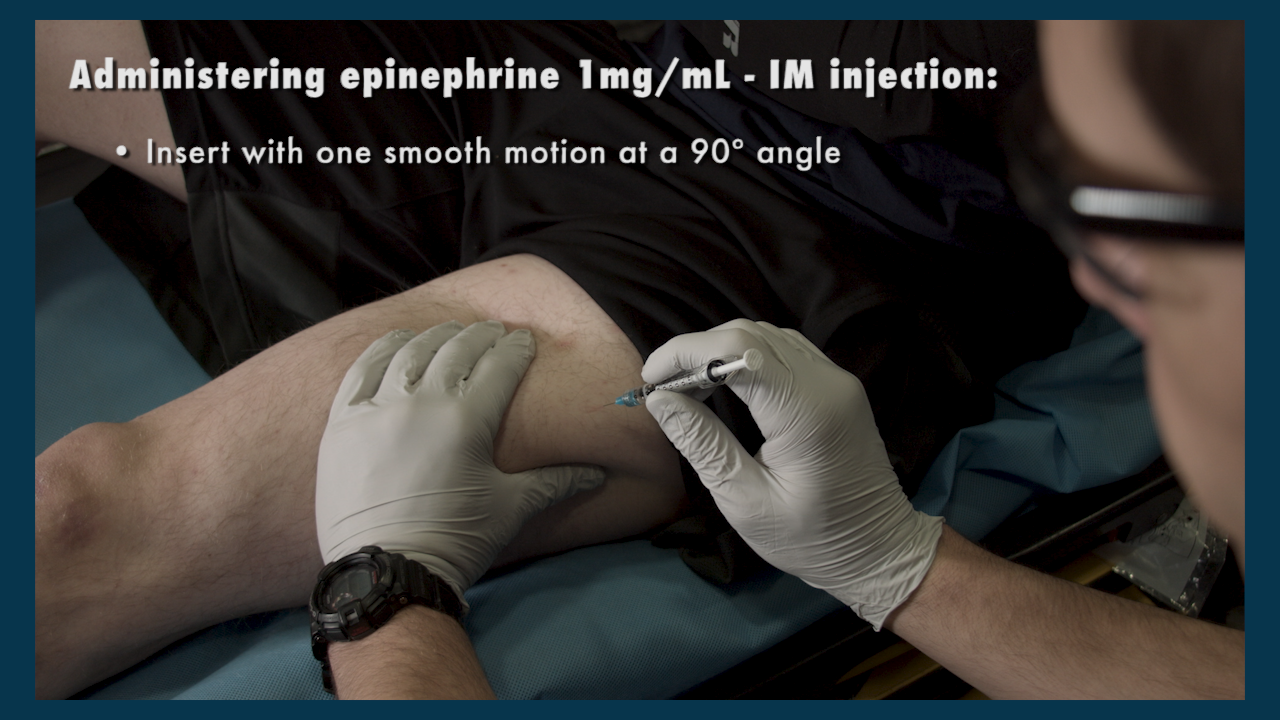
IM Epinephrine (1mg/mL)
- Lecture Credits: 0.5
- Designed for: MFR, EMT, Paramedic
- Category: Medical
-
This EMS continuing education (CE) course focuses on the use of intramuscular (IM) epinephrine (1mg/mL), when indicated during management of anaphylaxis and severe bronchospasm caused by asthma/COPD. This course includes details regarding the indications and effects of IM epinephrine (1mg/mL), as well as demonstration of multiple administration methods.
More Info
-


Identifying Large Vessel Occlusion (LVO) Strokes with FAST-ED
- Lecture Credits: 0.5
- Designed for: MFR, EMT, Paramedic
- Category: Medical
-
Over the last decade, tremendous advancements have been made in the realm of endovascular intervention for acute ischemic stroke. Stent retrieval has been established as the new standard of care for patients suffering from large vessel occlusion or LVO stroke. As a result, early recognition of LVO stroke in the pre-hospital setting has become a priority for EMS systems around the world. In addition, a number of severity based stroke assessment scales have emerged in response to this need. The Field Assessment Stroke Triage for Emergency Destination (FAST-ED) Stroke Severity Scale was developed deliberately for EMS providers to predict LVO strokes in the field. This course describes how to apply the steps of FAST-ED and lists additional key priorities associated with best practices in stroke patient assessment and care by EMS.
More Info
-

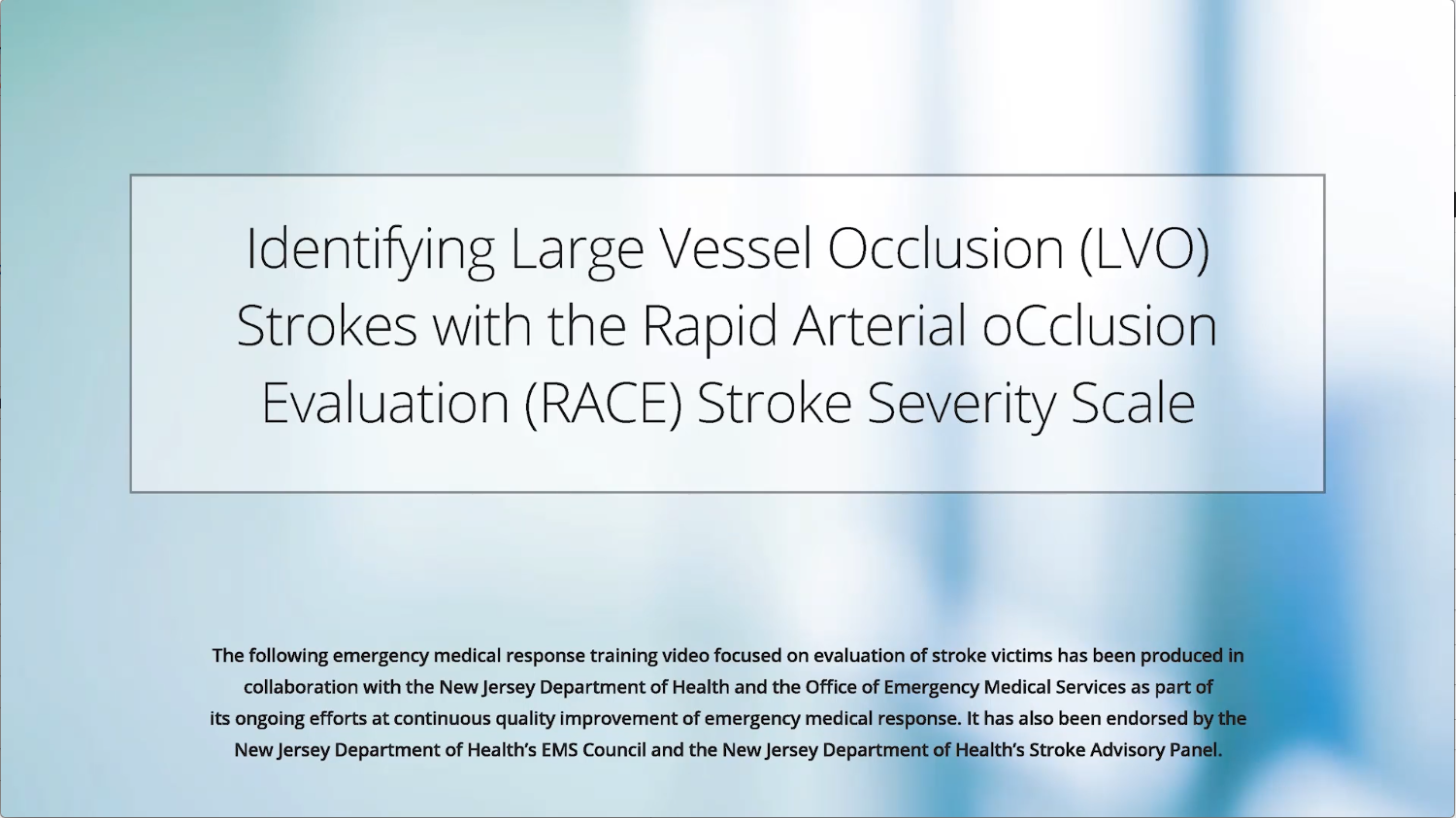
Identifying Large Vessel Occlusion (LVO) Strokes with Rapid Arterial oCclusion Evaluation (RACE): with New Jersey specifics
- Lecture Credits: 0.5
- Designed for: MFR, EMT, Paramedic
- Category: Medical
-
(Approved in New Jersey Only) Over the last decade, tremendous advancements have been made in the realm of endovascular intervention for acute ischemic stroke. Stent retrieval has been established as the most appropriate care for select patients suffering from large vessel occlusion, or LVO, stroke. As a result, early recognition of LVO stroke in the prehospital setting has become a priority for EMS systems around the world. Several severity-based stroke assessment scales have emerged in response to this need. The Rapid Arterial oCclusion Evaluation (RACE) Stroke Severity Scale was developed deliberately for EMS providers to predict LVO strokes in the field. This course describes how to apply the steps of the RACE scale and lists key priorities in stroke patient assessment and care by EMS. While the content of this course is appropriate for a National audience, the last section of the course covers background and practices specific to stroke care in New Jersey.
More Info
-


Large Vessel Occlusion Stroke
- Lecture Credits: 0.5
- Designed for: MFR, EMT, AEMT/Spec, EMT-P
- Category: Medical
-
During this course EMS providers will be introduced to LVO stroke, as well as a sample of stroke severity scales that are intended to accurately predict LVO stroke in the field. This course will also present how EMS providers can improve prehospital stroke screening, documentation, and communication with receiving stroke centers. Stroke treatment is rapidly evolving. This evolution centers on treating large vessel occlusion, or LVO strokes with an endovascular procedure known as mechanical thrombectomy. Several recent studies have clearly established mechanical thrombectomy as the standard of care for select LVO stroke patients. This new standard of care is changing the way EMS providers approach stroke patient assessment and treatment. As a result, EMS providers need education that explains what an LVO stroke is, why it's important, and how to recognize key indicators of LVO stroke in the field.
More Info
-


Anatomy and Pathophysiology of Stroke
- Lecture Credits: 0.5
- Designed for: MFR, EMT, AEMT/Spec, EMT-P
- Category: Medical
-
This course is intended to challenge EMS providers to not only recognize stroke but also to better understand its impact on the brain and its function. This course is intended to challenge EMS providers to not only recognize stroke but also to better understand its impact on the brain and its function. By combining improved understanding of the brain's structure and function, with the objective assessment criteria contained within stroke screening and severity based scales, EMS providers should be able to increase stroke detection in the field, improve their ability to convey stroke assessment findings to the receiving stroke center, and ultimately, help to produce better outcomes for stroke patients.
More Info
-


Platinum 600
- Lecture Credits: 0.5
- Designed for: EMT, Paramedic
- Category: Trauma
-
From the time you arrive on the scene of a serious trauma until the end of patient care the most important decisions are going to occur in the first 600 seconds. We call it the Platinum 600. You are the first and arguably the most important stage in the trauma system. This CME is designed to arm you with time based treatment plans in order to maximize your efficiency and effectiveness during the first 600 seconds of a serious trauma.
More Info
-


Burn Basics
- Lecture Credits: 0.5
- Designed for: MFR, EMT, Paramedic
- Category: Trauma
-
Managing patients with serious burns are among one of the greatest challenges faced by healthcare providers. As EMS professionals we are responsible for making critical decisions at each step of patient care. The goal of this course is to establish a basic understanding of the different types of burns, how they affect the patient and appropriate treatments and transport considerations.
More Info
-


Spinal Immobilization – Maybe it's Time for a Change
- Lecture Credits: 0.5
- Designed for: MFR, EMT, Paramedic
- Category: Trauma
-
This continuing education course is an evidence based informational presentation on how more harm than good may be done by using a long backboard to "Immobilize" patients with a potential spine injury in the pre-hospital setting. All information expressed in this course is cited through multiple studies.
More Info
-

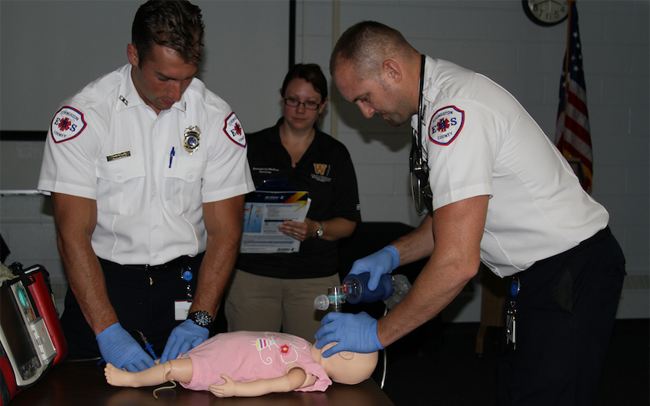
The Realities of Pediatric Medication Administration in EMS
- Lecture Credits: 0.5
- Designed for: MFR, EMT, Paramedic
- Category: Special Considerations; Pediatric Medication Administration
-
Over the last several years, research has proven, that as EMS providers, we don't see a lot of pediatric emergencies in the prehospital setting, and when we do, common medication errors are made. More importantly, studies have shown WHY these critical errors exist and WHAT we can do about it in our ongoing professional development. Bottom line, research is the foundation of evidence-based medicine that drives positive change through ongoing education. This course seeks to help EMS providers recognize the scarcity of pediatric emergencies and the gravity of the situation.
More Info
-


MI Mandatory Reporting Laws – EMS Response to Child and Vulnerable Adult Abuse and Neglect
- Lecture Credits: 0.5
- Designed for: MFR, EMT, Paramedic
- Category: Special Considerations
-
Michigan CE only: Children and vulnerable adults are suffering from a hidden epidemic of abuse and neglect. The United States has one of the worst records among industrialized nations – losing on average between four and seven children every day to child abuse and neglect. Abuse of vulnerable adults is one of the fastest growing crimes in Michigan, with an estimated 90,000 vulnerable adults at risk annually. This course seeks to empower Michigan EMS providers to more effectively respond in situations where they suspect child or vulnerable adult abuse or neglect, and, more importantly, understand the associated laws they are held to. Contact American CME by email at AmericanCME@AmericanCME.com for information on how we can produce a child and vulnerable adult abuse, neglect, and exploitation mandated reporting program based on your state laws and local jurisdiction.
More Info
-


Introduction to the MI-MEDIC: Part 1
- Lecture Credits: 0.5
- Designed for: Paramedic
- Category: Special Considerations; Pediatric Medication Administration
-
Researchers have spent the last several years studying EMS medication errors in pediatric emergencies. They didn't just study the problem, though. When they figured out where we fail, they did something about it. They created the Michigan Medication Emergency Dosing and Intervention Cards, or the MI MEDIC, which tells you the milligrams and the total volume of a medication to administer based on commonly supplied concentrations. This 2-part series seeks to be an in-service training for the MI-MEDIC, and is designed to introduce you to the next tool in your box, that answers that question, "How much do I push?" - Pediatrics - Medication Administration
More Info
-

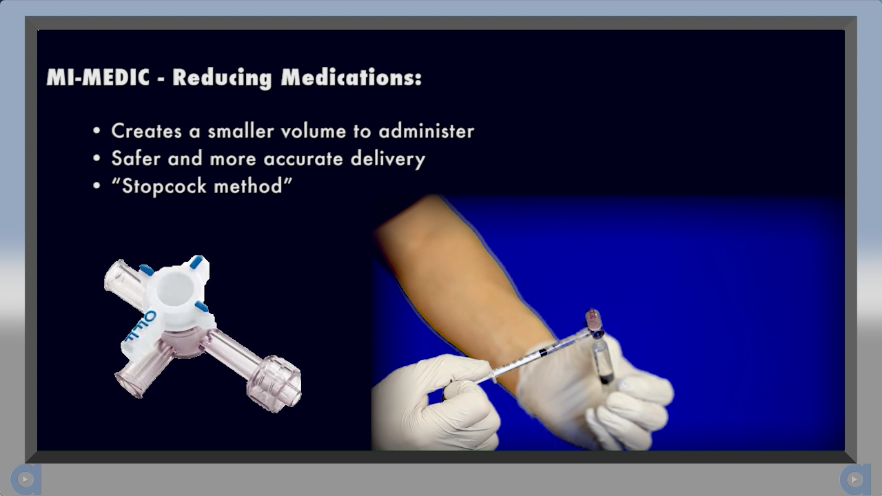
Introduction to the MI-MEDIC: Part 2
- Lecture Credits: 0.5
- Designed for: Paramedic
- Category: Special Considerations; Pediatric Medication Administration
-
Researchers have spent the last several years studying EMS medication errors in pediatric emergencies. They didn't just study the problem, though. When they figured out where we fail, they did something about it. They created the Medication Emergency Dosing and Intervention Cards, or the MI-MEDIC. The one tool in the field that tells you the mg's, AND how many milliliters, the volume of a medication, to administer based on commonly supplied concentrations. This 2-part series seeks to be an in-service training for the MI-MEDIC, and is designed to introduce you to the next tool in your box, that finally answers that question, "How much do I push?" - Pediatrics - Medication Administration
More Info
-


Landing Zone
- Lecture Credits: 0.5
- Designed for: MFR, EMT, Paramedic
- Category: Operations
-
Do you know what to do when an EMS helicopter is needed to transport a critically injured patient? HEMS, or Helicopter Emergency Medical Services, consist of two perspectives; the eyes in the air, and the eyes on the ground. In this course you will learn how to effectively facilitate a HEMS response and safe landing by understanding both of these perspectives in order to deliver your patient to definitive care when a helicopter is required.
More Info
-

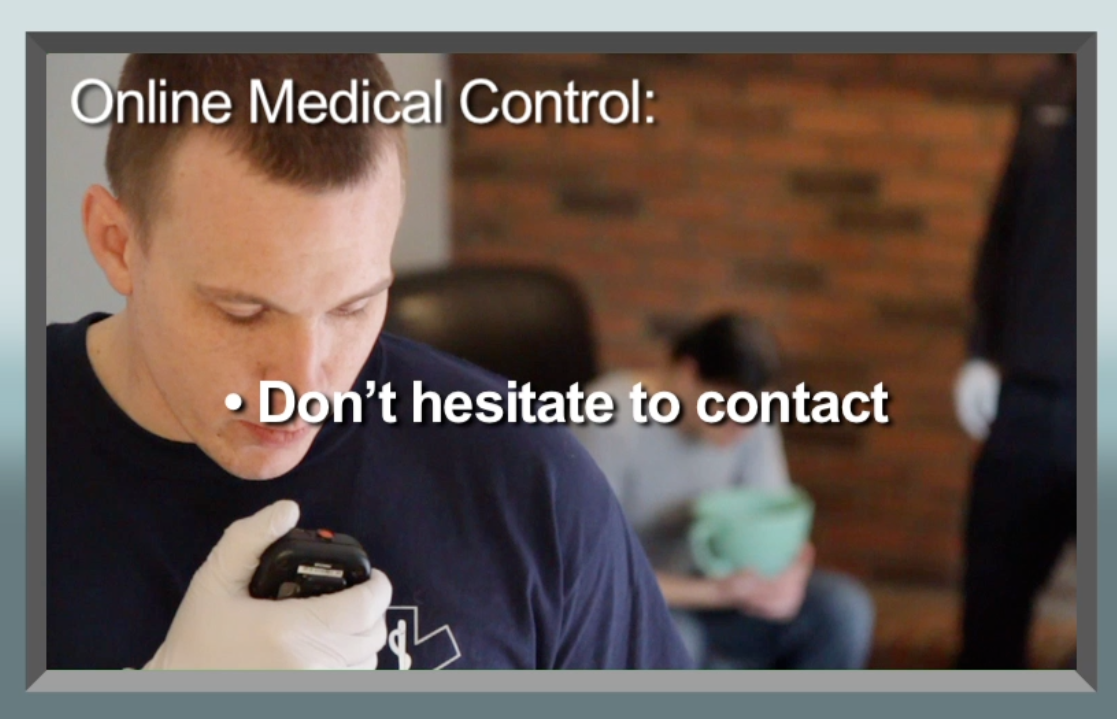
Radio Communications for EMS
- Lecture Credits: 0.5
- Designed for: MRF, EMT, Paramedic
- Category: Operations
-
EMS communication can take place face-to-face, via radio, and in the form of written or electronic patient care reports. This course will focus on radio communication between hospital and pre-hospital providers. The goal of this lesson is to foster a greater appreciation for the importance of effective communication between EMS providers and emergency department staff by modeling multiple examples from multiple perspectives.
More Info
-


Violence in EMS: Recognize and Respond
- Lecture Credits: 0.5
- Designed for: MFR, EMT, Paramedic
- Category: Operations
-
There is widespread evidence that the majority of EMS personnel can expect to be assaulted at some point in their careers; however, how severe, and when that assault will occur is difficult to determine. This course seeks to establish a better understanding of the importance of having a comprehensive plan on how to deal with violence that includes the right for EMS personnel to defend themselves, and steps to identify, avoid, or deescalate emerging threats.
More Info
-


ACS Guidelines for Field Triage of Injured Patients
- Lecture Credits: 0.5
- Designed for: MFR, EMT, Paramedic
- Category: Operations
-
The purpose of this course is to provide EMS personnel with education to improve the execution of the ACS Trauma Triage Decision Making Scheme in the field. According to a study published in the New England Journal of Medicine in January of 2006, severely injured patients had a 25% reduction in mortality when transported to a trauma center. EMS providers must possess the ability to effectively utilize the Trauma Triage Decision Making Scheme in order to identify injured patients who are at the greatest risk and assure they are transported to a trauma center that possesses the resources capable of meeting their needs.
More Info
AmericanCME offers FREE CE courses for the first responder. These courses are not approved through CAPCE. Please see our Accepted States page to see if your state EMS office will accept these for continuing education.
Source: https://americancme.com/courses/index/free
0 Response to "Free Online Continuing Education Courses for Emts"
Mag-post ng isang Komento